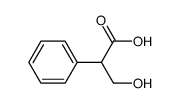The presence of atropinesterase activity in animal plasma.
Patrick K Harrison, John E H Tattersall, Ed Gosden
Index: Naunyn Schmiedebergs Arch. Pharmacol. 373(3) , 230-6, (2006)
Full Text: HTML
Abstract
The enzyme atropinesterase (EC 3.1.1.10) causes the rapid hydrolysis of tropane alkaloids such as atropine and scopolamine. This enzyme is known to occur in a certain proportion of rabbits and some plants, although its presence in other animal species remains controversial. The potential presence in some animals but not others of an enzyme which can rapidly hydrolyse compounds such as atropine is a potential unwanted experimental variable in many experiments. Because of the uncertainty surrounding the enzyme and the paucity of data, it was decided to examine whether we could detect and characterise atropinesterase activity in the plasma of dogs, goats, guinea-pigs, humans, pigs, rabbits and rhesus by separating and quantitating the substrate (atropine) and one of the products (tropic acid) by high performance liquid chromatography (HPLC). It was found that plasma from some but not all rabbits possessed a capacity to breakdown large quantities of atropine; an effect that was apparently enantiomer-specific. Plasma from other rabbits, and plasma from all other species investigated, proved capable of hydrolysing atropine at a rate exceeding that of non-specific breakdown. It remains to be determined whether this effect is due to a low expression of atropinesterase or an alternative hydrolysing enzyme.
Related Compounds
| Structure | Name/CAS No. | Molecular Formula | Articles |
|---|---|---|---|
 |
Tropic acid
CAS:552-63-6 |
C9H10O3 |
|
Targeted metabolomics in the expanded newborn screening for ...
2015-06-01 [Mol. Biosyst. 11 , 1525-35, (2015)] |
|
A chiral separation strategy for acidic drugs in capillary e...
2014-10-01 [Electrophoresis 35(19) , 2807-18, (2014)] |
|
Commercial formaldehyde standard for mass calibration in mas...
2015-03-01 [J. Mass Spectrom. 50(3) , 463-9, (2015)] |
|
The metabolism of atropine in man.
1986-10-01 [J. Pharm. Pharmacol. 38(10) , 781-4, (1986)] |
|
The isolation and identification of 6-hydroxycyclohepta-1,4-...
1993-07-01 [Biochem. J. 293 ( Pt 1) , 115-8, (1993)] |